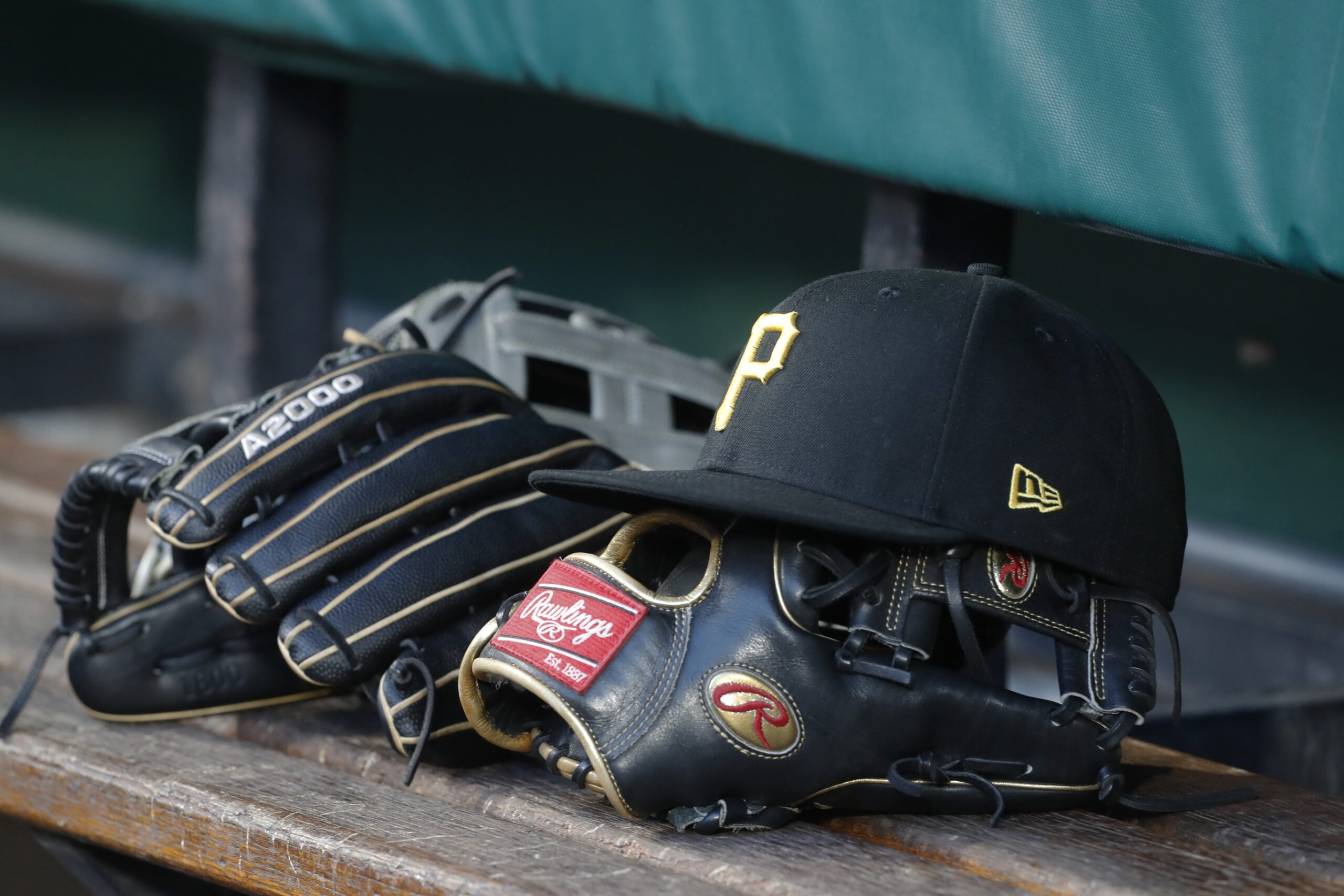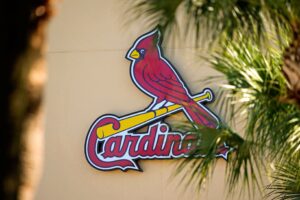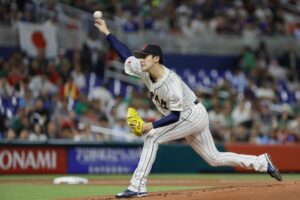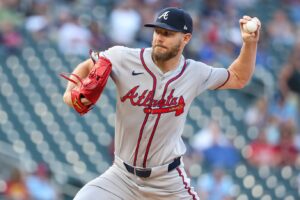Last Friday, the Pittsburgh Pirates hit seven home runs during a 14-2 victory over the New York Mets at PNC Park. It was only the second time the Pirates hit seven homers in a home game. The first time was on August 16, 1947, against the St. Louis Cardinals at Forbes Field. Rabid fans like you know all about Friday’s game. Let’s go back to that Saturday afternoon in 1947.
Pirates tie franchise record with SEVEN HR is a single game. This Rowdy Tellez GRAND SLAM was the record tying swing
Tellez and Reynolds each with 2 HR (Grand Slam each) pic.twitter.com/PiIUEW1SSx
— Bob Pompeani (@KDPomp) July 6, 2024
Pirates Hit Seven Home Runs vs. Cardinals in 1947
The Pirates won that game, 12-7, after a late start due to a 50-minute rain delay. Amazingly, it took just 2:09 to play the game. The victory improved their record to 49-65, “good” for seventh place in the eight-team National League. No matter. Pittsburgh fans were flocking to Forbes Field for the daily home run show. The Pirates would finish the 1947 season with 156 home runs. They were second in the NL in that category. The next day, the Pirates passed the one million mark in attendance for the first time.
Pirates Snag Greenberg
Hank Greenberg was considering retiring after a 1946 season when he led the major leagues with 44 home runs. In 12 years with the Detroit Tigers, the 36-year-old right-handed-hitting slugger hit .319/.412/.616 with 306 home runs, 1,200 RBI, and, although it wasn’t a “thing” back then, an OPS+ of 161. He was a two-time American League Most Valuable Player, five-time All-Star, and four-time home run champion. This included a 1938 season where he hit 58 homers, just two short of Babe Ruth’s single-season record. Yet his back was bothering him, and the Tigers were anxious to be rid of his salary.
On January 18, 1947, the Pirates purchased Greenberg from the Tigers. The official records say the purchase price was $75,000. Contemporary newspaper accounts speculated that the actual purchase price was $85,000. As the Tigers already had him signed for $85,000, the higher figure makes sense. It was a risky play by Pirates owner John Galbreath. Greenberg informed Galbreath he was going to retire. As Galbreath persisted, Greenberg kept making demands, and Galbreath kept meeting them. Greenberg wanted a $100,000 salary. Galbreath agreed. Greenberg didn’t want to play at Forbes Field, where the left-field dimension was 365 feet. Galbreath agreed to shorten the distance and make it the same as the Tigers’ home at Briggs Stadium. Finally, the big first baseman became a Pirate.
Empty Garden
Thus, Greenberg Gardens was born. It was an unsightly fenced-in area in front of the left-field wall that decreased the home-run distance to 335 feet. (It was 340 feet at Briggs Stadium.) There was no “garden” there. The home and visiting bullpens were moved there, separated by a wall of wood. Greenberg would hit just seven home runs on the road for the Pirates in 1947. At home, he hit 18 homers, half of which landed in the Gardens.
However, the biggest beneficiary was the Pirates’ second-year left fielder, Ralph Kiner. Kiner led the NL in home runs with 23 in 1946. He would go on to hit 51 homers in 1947 en route to his second of seven consecutive home run titles.
August 16, 1947
In addition to the seven home runs by the Pirates, the Cardinals hit three on this day. The 10 home runs by the two teams tied a major league record. The Cardinals got the home run derby started in the first inning against Pirates starter Roger Wolff. Terry Moore belted a solo homer and Whitey Kurowski connected on a three-run blast. Pirates manager Billy Herman went to the bullpen for Jim Bagby, famous as one of two Cleveland Indians pitchers who stopped Joe DiMaggio’s 56-game hitting streak in 1941. Bagby would finish the game and earn the win.
The Pirates began their home run barrage in the bottom of the inning against the Cardinals’ Ken Burkhart. Greenberg and wiry shortstop Billy Cox went back-to-back, Greenberg’s coming with two on. After Kiner and Greenberg went back-to-back in the third, Burkhart was lifted for Ted Wilks. Wilks got out of the third inning but was touched up in the fourth inning when he surrendered a three-run bomb to Kiner and a two-run shot by Cox. In between, Kurowski hit his second homer of the game.
The teams managed to go without hitting any further homers until the home eighth when Kiner led off and went deep against Johnny Grodzicki. Only three of the ten homers hit by both teams landed in Greenberg Gardens: Moore’s, Cox’s first, and Kurowski’s second. Kiner’s second was a tape measure shot that hit the light towers above the left field wall.
The next day’s Pittsburgh Sun-Telegraph ran a photo of the five home run hitters from both teams shaking hands. Kiner is smiling, while Moore is gritting his teeth like a man forced to endure his wife’s high school reunion.
After 1947
Of the trio that combined for seven Pirates home runs on that August day, only Kiner remained after 1947. Despite hitting 25 homers, Greenberg decided to retire after that season. At the time, nobody in baseball had retired after hitting that many home runs. He moved on to an executive position with the Cleveland Indians, in time to receive a World Series ring for their 1948 championship. Greenberg Gardens remained for a few more years – more on that in a bit – and greatly benefited Kiner. It continued to be called Greenberg Gardens, although some members of the press christened it Kiner’s Korner. That would later be the name of Kiner’s popular postgame interview show when he became one of the original broadcasters for the New York Mets in 1962.
In December, Cox was part of what was surely the worst trade in Pirates history. The key pieces to the deal were Cox and left-handed pitcher Preacher Roe going to the Brooklyn Dodgers with an aging Dixie Walker coming to Pittsburgh. Cox, converted to a third baseman, and Roe were important contributors to the Dodgers’ 1949-53 NL dynasty. Walker lasted just two years with Pittsburgh, one as a regular, and one as a reserve.
The Fate of Kiner and the Gardens
After the 1950 season, Branch Rickey left the Dodgers and joined the Pirates as their executive vice president and general manager. With a tight grip on the purse strings, Rickey wasn’t amenable to dishing out the type of contract that Galbreath had given Greenberg. He and Kiner feuded over salary. It all came to a head before the 1953 season, when Rickey publicly accused Kiner of making outrageous demands, an accusation that Kiner denied. Kiner had led the majors with 37 home runs in 1952. Still, Rickey cut his salary from $90,000 to $75,000, famously saying, “We finished last with you. We can finish last without you.” Kiner’s less-famous retort was something to the effect of, you’re cutting my salary because you did a poor job of putting together a good team.
Rickey finally got his wish on June 4, 1953, trading Kiner to the Chicago Cubs in a 10-player trade that the Pittsburgh Post-Gazette announced with bold headlines usually reserved for declarations of war. The Pirates got $150,000 and six players who went on to become household names, but only in their own households.
Rickey announced that Greenberg Gardens would be torn down immediately. Workers began tearing it down on June 5, only to be ordered to halt. There was a rule forbidding a team to alter the dimensions of a ballpark during a season without the consent of six of the eight NL owners. Three owners voted against it. Their rationale was that teams shouldn’t be allowed to change their ballparks every time a player was traded. Greenberg Gardens came down after the 1953 season.
The Last Word
It’s believable that the Pirates wouldn’t hit seven home runs in a game again in cavernous Forbes Field. It’s a bit of a surprise that the Lumber Company of the 1970s never did it in Three Rivers Stadium. For the much-maligned 2024 Pirates to accomplish the feat, the word would be “shocking.” But that’s why baseball is the greatest of all games. One never knows what awaits.
Photo Credit: © Charles LeClaire-USA TODAY Sports






